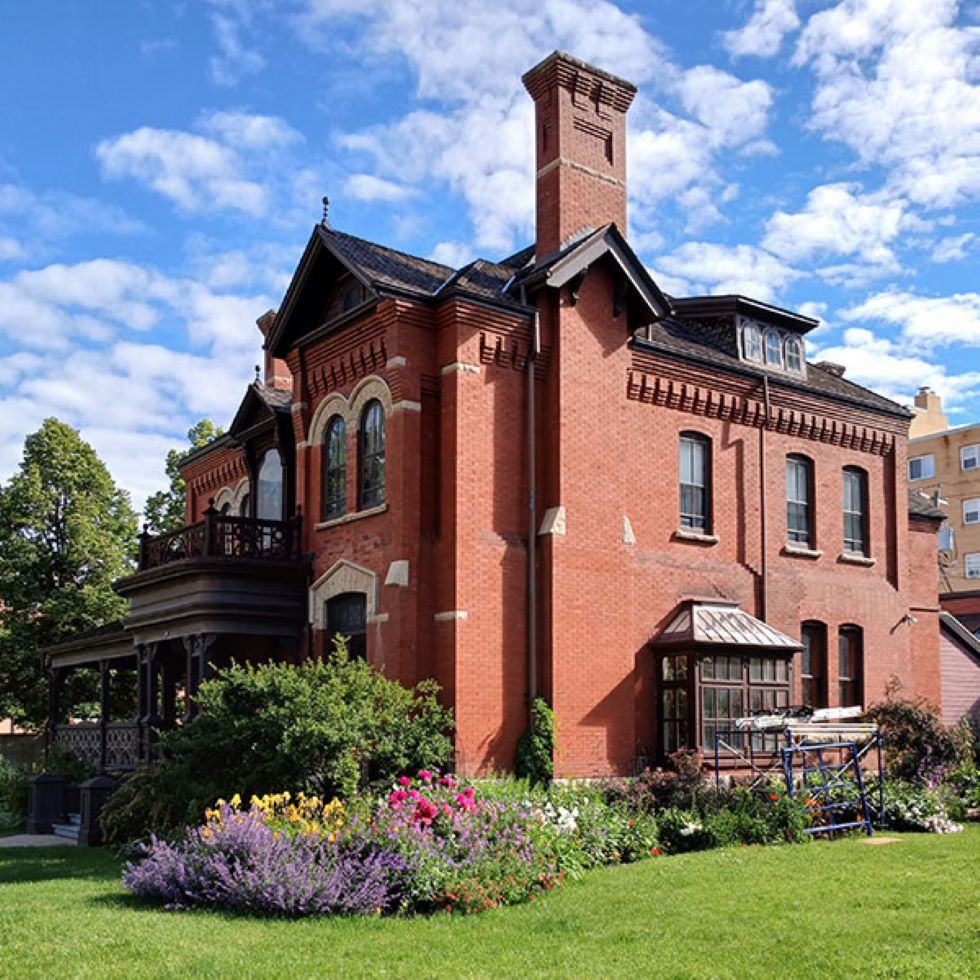A series of walking tours around Winnipeg’s downtown are showcasing the city from a wide variety of lenses this summer from historical to natural. The tours are centred around the Dalnavert Museum on Carlton Street and offer perspectives on the gardens that used to line the historic house, as well as class relationships and Metis history that make up the broader downtown.
“We’ve seen a ton of Winnipeggers come out [and] we’ve seen a ton of visitors from across Canada,” says Sarah Watkins, the Dalnavert Museum’s executive director. “It’s actually been really phenomenal to see the support from the community.”
A returning favourite for the summer, the museum’s History of the Red River Metis tour was designed a couple of years ago to illuminate hidden stories of the Metis connection to the land, which existed long before the Dalnavert House was ever built. “The history of the land goes back much deeper, much further than a lot of Winnipeggers realize,” says Watkins. “We really want to make sure that we’re recognizing the wrongs that have been done on the land towards the Indigenous people who were here first.”
A new addition on the walking tours that the Dalnavert Museum is offering this summer is called Poverty and Prosperity: A Walk Down Early 1900s Broadway. The tour explores different architectural landmarks throughout the downtown and how they illustrate the classism and inequality and the ways in which they intersect through infrastructure.
One stop that Watkins notes highlights the classism built into Winnipeg perfectly is Union Station on Main Street. “That building has that beautiful rotunda area with the big blue ceiling, very ornate and elaborate,” says Watkins, “but the train station was actually where a lot of immigrants arrived in Winnipeg in the early 1900’s. They were not welcome in the neighbourhood that is now Broadway. They would have ended up living in housing further north in the Point Douglas area and other areas more to the north of Winnipeg.”
Another tour offering insight into Winnipeg’s early-20th century life takes place at the museum itself. Cheekily titled A Walk Through Thyme, the tour showcases the types of plants that would have been a part of the gardens of the day.
Of all the plants included in the gardens, Watkins was most surprised by the fact that hostas – a tropical plant that is commonplace in modern gardens – was already a part of the horticultural community of the early-20th century. “The women of high status [wanted] to grow them in their gardens,” she explains. “They actually wouldn’t have planted the hostas in the ground. They would have kept them in pots because they would have been so expensive that it was kind of a showpiece in their garden.”
To learn more about all of these tours and to reserve spaces in them, visitors are encouraged to visit the museum’s website in advance.
